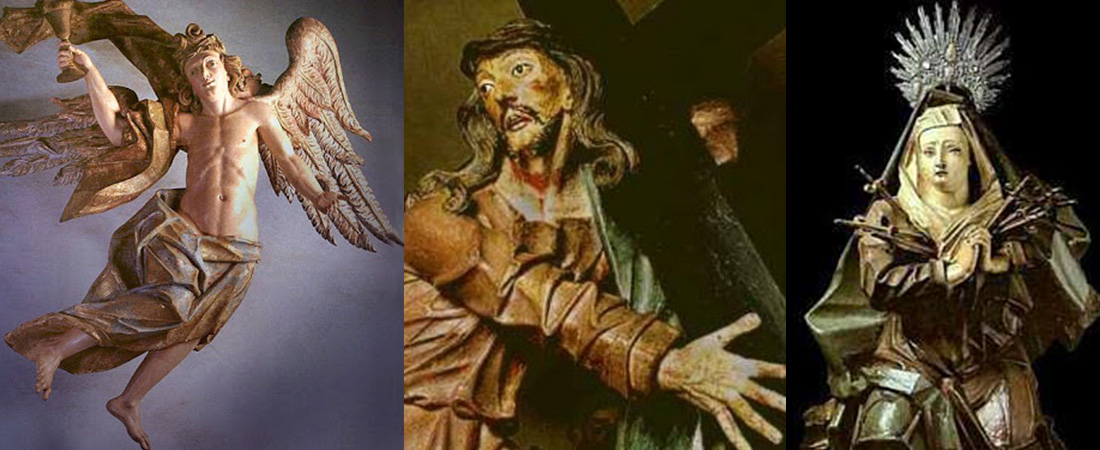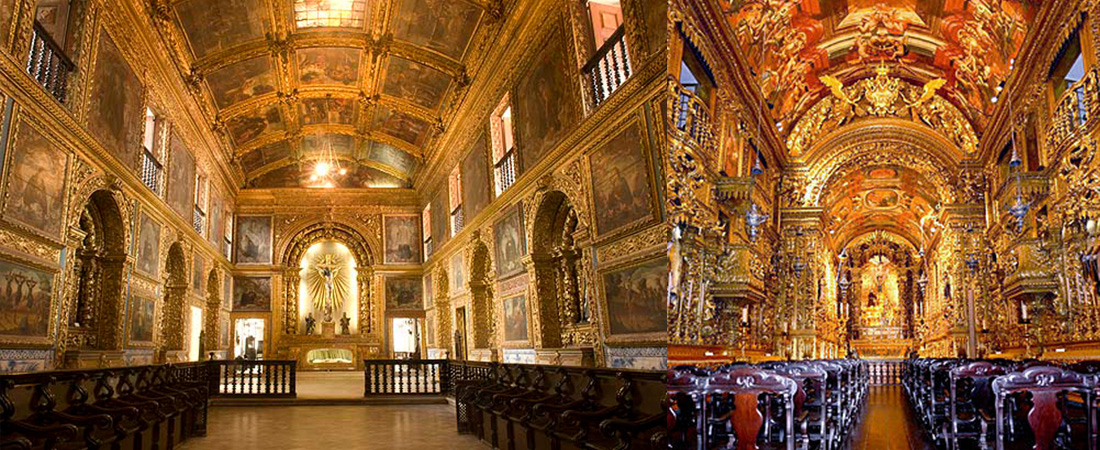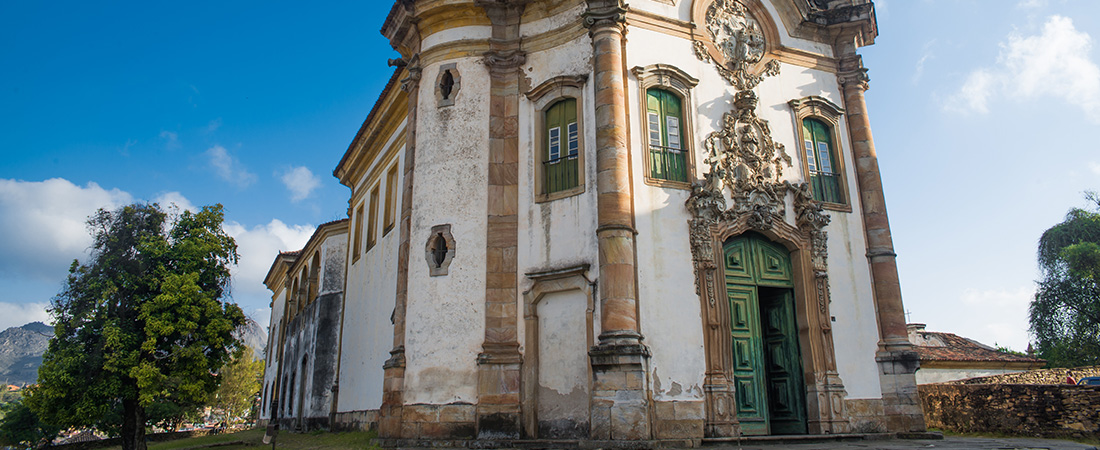Description of available fields
The CMSRB website is divided in fields, as listed and described below.
Code
Represents the cataloguing code of this Catalogue. For that end, we referred to the liturgical, para-liturgical or poetic incipit of the works, in alphabetic order. The code starts with the acronym CMSRB (Catálogo de Música Sacra e Religiosa Brasileira), followed by the number that indicated the correlation between incipit/order. The number following the slash is strictly sequential, not following any specific criteria.
Ex.: CMSRB-013/003
The inclusion of new incipits after the initial list is established hampers the maintenance of a strict alphabetic order relation between incipits / numeric order.
Incipit
This field is there for the insertion of the liturgical, para-liturgical or poetic incipit. In the case of some longer types of works, like Offices, Passos Processions, etc, with many subdivisions, we recorded the incipits of the functional unities and/or sections.
Name of the work
The title of the works usually figures in various places: on the cover, at the title page, in the summary, at the head in the first page of the musical score. The problem is that these various titles do not always coincide. Therefore, we opted to select the title as it is shown at the head in the first page of the musical score. In case the title is absent in such location of the publication, we adopted the one shown in the summary. These titles can sometimes be shown in a simplified manner, in case of excess of information.
Author
The author's credit is presented according to the publication, not being an attribution of CMSRB to argue about conflicting credits. The problem is only mentioned, somehow, in the field Observations. However, the author's name is always presented in a standard manner, using the last name as the entry, independently of how it appears in the publications. The category Anonymous is used when there is no mention of authorship in the publication, with possible complementary information in the Observations field.
Period
In this field the years of birth and death of the authors are entered, wherever possible. These dates are stated on the basis of the most recent musicological research, and not necessarily as informed on the publications.
Following musicology standards, some of these dates are stated with question marks, when there is doubt.
When it is not possible to date the years of birth and death precisely, the centuries in which the authors lived are stated.
Occasionally, the term flourished (fl.) can be resorted to.
Region
Indicates the geographic origin of the composer and/or his/her place of activity.
Destination
Indicates the period of the Liturgical Year or the liturgical, para-liturgical or religious purpose for which the published work was composed. In case of multiple purposes, the term Diverse is used.
Units
Indicates the ceremonial unit or the functional unit (Castagna 2004) the published work was composed for.
Language
This field states the language in which the work is written. Evidently, Latin is predominant, but we also find works in Portuguese, Italian and French.
Setting
Indicates the vocal and/or instrumental setting of the work, as presented in the publication. The vocal parts evince the choir or solo parts, wherever possible. The terms Voice, 1st Voice, etc. are used when the publication does not specify a specific vocal range.
In the low-pitched instrumental parts, the term instrumental bass is used whenever the instruments are not specified, cello/bass when these instruments share the same staff, realized continuo when the publication presents the bass in that manner. The term reduction is also used when the publication presents a reduction of the instrumental parts for piano, organ or harmonium.
Size
Presents the number of bars of the published work. To count the number of bars we did not consider remissive indications of any kind, but the number of bars actually printed. Therefore there may be occasional discrepancies in the number of bars indicated in different publications of the same work.
Collection
Indicates whether a publication was issued individually or if it is part of a volume or collection containing other works.
Original cataloguing
Indicates the original catalogue record, when applicable: ISBN, ISSN, plate number, etc.
Cataloguing year
Indicates the year of publication, as shown on the publication. Bibliographic standards are used to indicate conjectural or imprecise dates:
[2001] – precise year, not indicated on the work
[1925 or 1926] – one or the other
[between 1901 e 1908] – precise period
[1898?] – probable year
[after 1942] – earliest possible date
[198-] – precise decade
[189-?] – probable decade
[18-] – precise century
[18-?] – probable century
In case of publications in periodicals, the month may be indicated 1941/December
Cataloguing location
Indicates the location where the work was published, as shown on the publication, including the names of the city and country.
Editor
The person responsible for establishing the text, as recorded in the publication or according to data collected from indirect sources, as is the case with the Música Sacra Mineira collection. This may be a collective item.
Publisher
The entity or person responsible for the publication: library, university, editing company, cultural institution, site, etc.
Medium
The manner the publication is presented: print, digital or both.
Parts
Indicates whether the publication includes the instrumental and/or vocal parts for performance.
Justification (not available)
Indicates the motivation or theme of the publication. This item may be explicit in the publication’s introductory text or simply in its title or the collection to which it belongs.
Sources (not available)
Indicates whether the published edition identifies the sources used for that purpose, or not. Also indicates the manner in which the sources were described:
Direct, in the body of the publication / Indirect, whenever it refers to information not contained in the body of the publication, as in the collection Música Sacra Paulista, for example, where the editions of the works by André da Silva Gomes make reference to thematic catalogue of works by this composer (Duprat, 1995).
Precise, whenever there is no doubt as to the sources actually used / Imprecise, whenever the editor lists the sources which transmit the work but does not make it clear which ones were actually used.
Type of source (not available)
These may be autograph or handwritten copies, but also a prior edition.
Interference (not available)
Indicates whether or not the editor evinces his/her editorial interference, and the manner in which this is done:
Critical apparatus - Attached systematic listing, containing editorial interference
Editorial integration - identification of editorial interference in the body of the music text, using asterisks, brackets, different typefaces and font sizes, etc.
Critical commentary - A general comment by the editor concerning his positions towards editorial interference, but without further detail.
Introduction (not available)
Indicates the existence or absence of such editorial accessory. When it is there, we usually highlight the following recurrent items: the work's context, the composer's biography, the functionality of the work, the text’s liturgical, para-liturgical or poetic approach (analysis, translation, etc.), an analysis of the work. Other items not listed above are grouped under the generic term "other items". The language in which the introductions are written is also stated.
Location
This item aims to help the user who is interested in a particular publication. However, it does not propose to be exhaustive, bringing solely one location for each publication. It is possible that, as the research evolves, further items will be added to the online version. Locations may be libraries, cultural institutions, archives and websites where the publication can be directly found or where it may be purchased.
References
Presents references of handwritten or printed sources in catalogues for the works contained in the CMSRB.
Notes
A field available to record diverse information about the publications. The main information in this field is the occasional referral to other existing publications of a given work, or part of it, when applicable.
© 2017 Carlos Alberto Figueiredo | All rights reserved.


